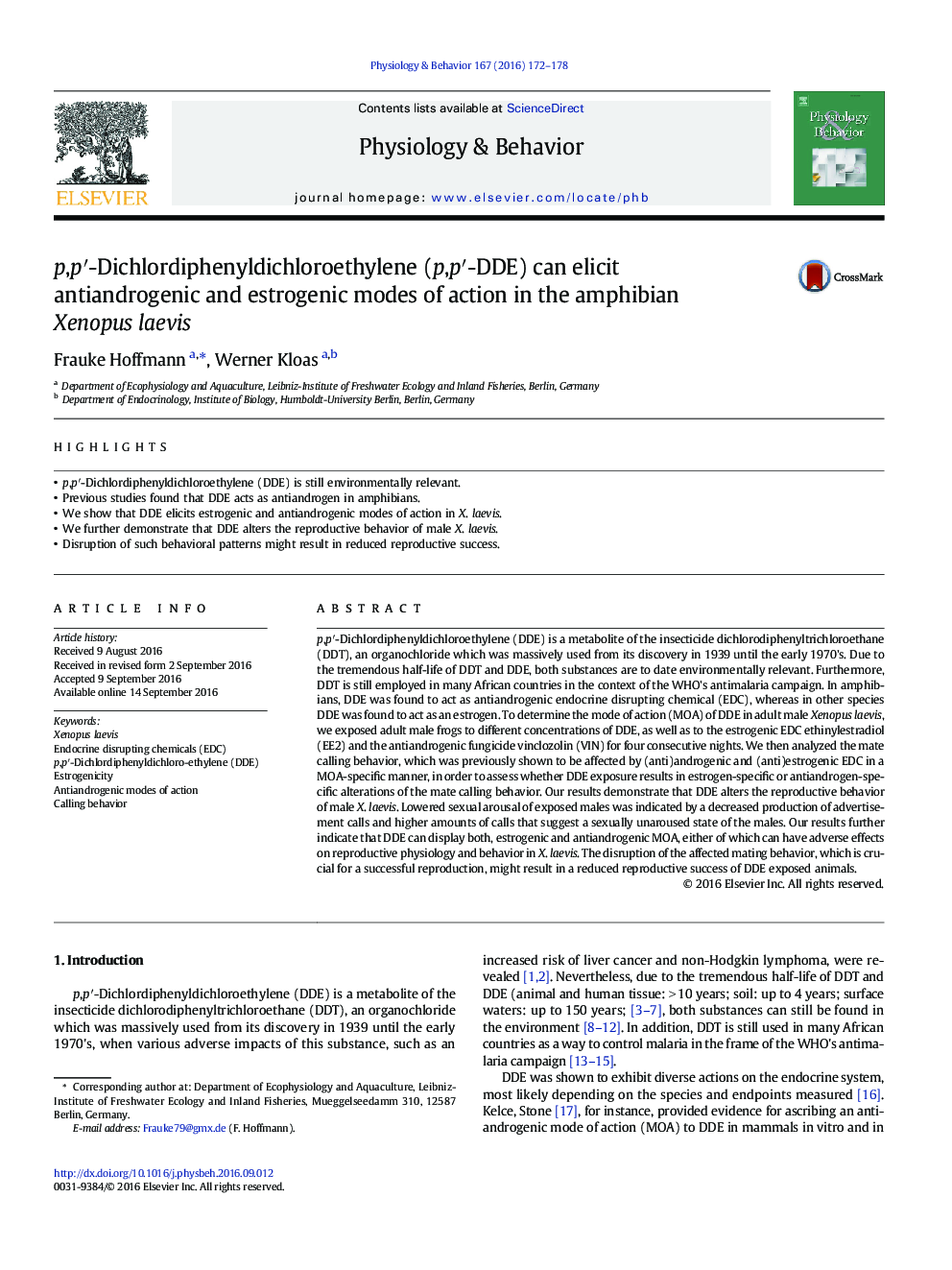| Article ID | Journal | Published Year | Pages | File Type |
|---|---|---|---|---|
| 5922498 | Physiology & Behavior | 2016 | 7 Pages |
â¢p,pâ²-Dichlordiphenyldichloroethylene (DDE) is still environmentally relevant.â¢Previous studies found that DDE acts as antiandrogen in amphibians.â¢We show that DDE elicits estrogenic and antiandrogenic modes of action in X. laevis.â¢We further demonstrate that DDE alters the reproductive behavior of male X. laevis.â¢Disruption of such behavioral patterns might result in reduced reproductive success.
p,pâ²-Dichlordiphenyldichloroethylene (DDE) is a metabolite of the insecticide dichlorodiphenyltrichloroethane (DDT), an organochloride which was massively used from its discovery in 1939 until the early 1970's. Due to the tremendous half-life of DDT and DDE, both substances are to date environmentally relevant. Furthermore, DDT is still employed in many African countries in the context of the WHO's antimalaria campaign. In amphibians, DDE was found to act as antiandrogenic endocrine disrupting chemical (EDC), whereas in other species DDE was found to act as an estrogen. To determine the mode of action (MOA) of DDE in adult male Xenopus laevis, we exposed adult male frogs to different concentrations of DDE, as well as to the estrogenic EDC ethinylestradiol (EE2) and the antiandrogenic fungicide vinclozolin (VIN) for four consecutive nights. We then analyzed the mate calling behavior, which was previously shown to be affected by (anti)androgenic and (anti)estrogenic EDC in a MOA-specific manner, in order to assess whether DDE exposure results in estrogen-specific or antiandrogen-specific alterations of the mate calling behavior. Our results demonstrate that DDE alters the reproductive behavior of male X. laevis. Lowered sexual arousal of exposed males was indicated by a decreased production of advertisement calls and higher amounts of calls that suggest a sexually unaroused state of the males. Our results further indicate that DDE can display both, estrogenic and antiandrogenic MOA, either of which can have adverse effects on reproductive physiology and behavior in X. laevis. The disruption of the affected mating behavior, which is crucial for a successful reproduction, might result in a reduced reproductive success of DDE exposed animals.
